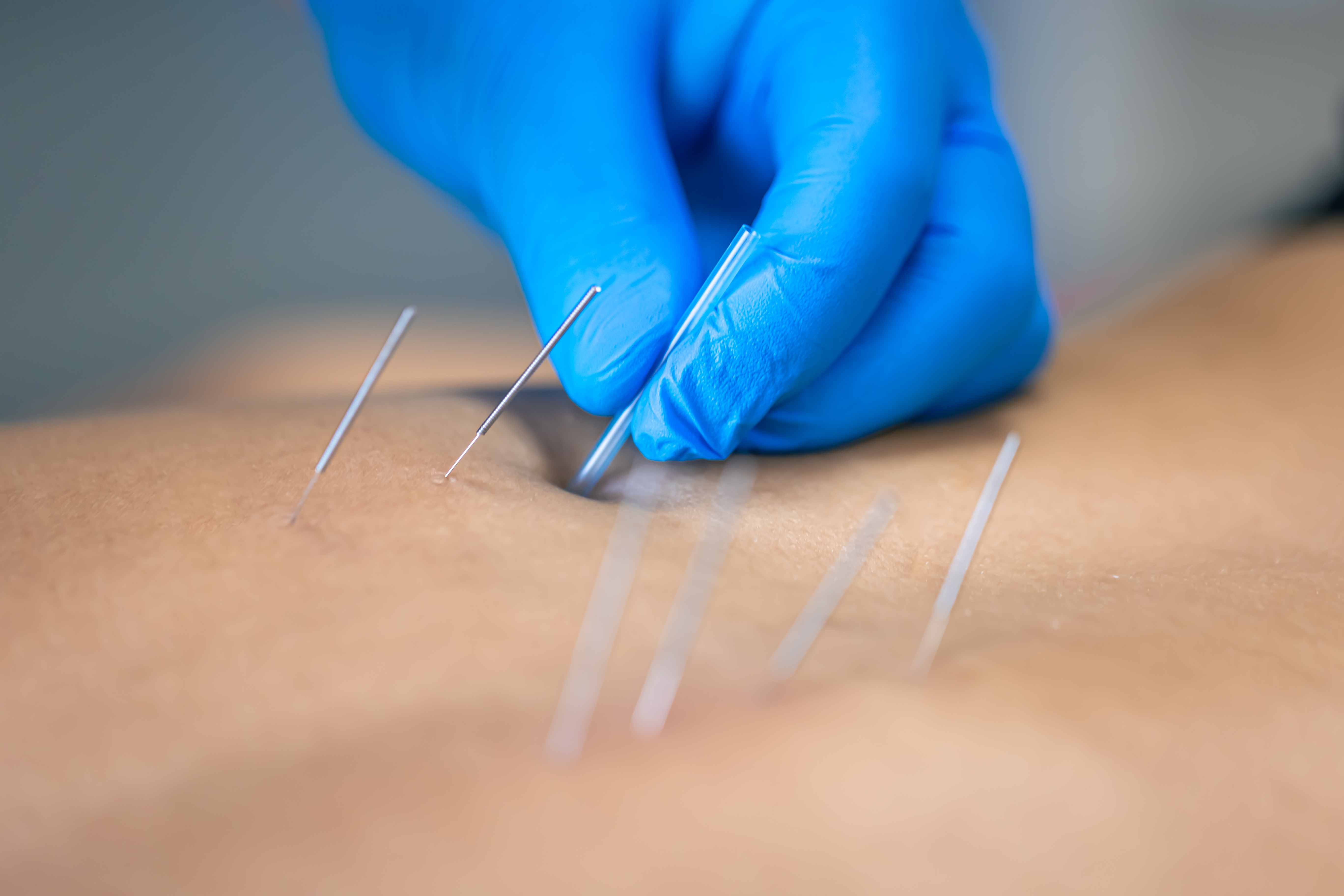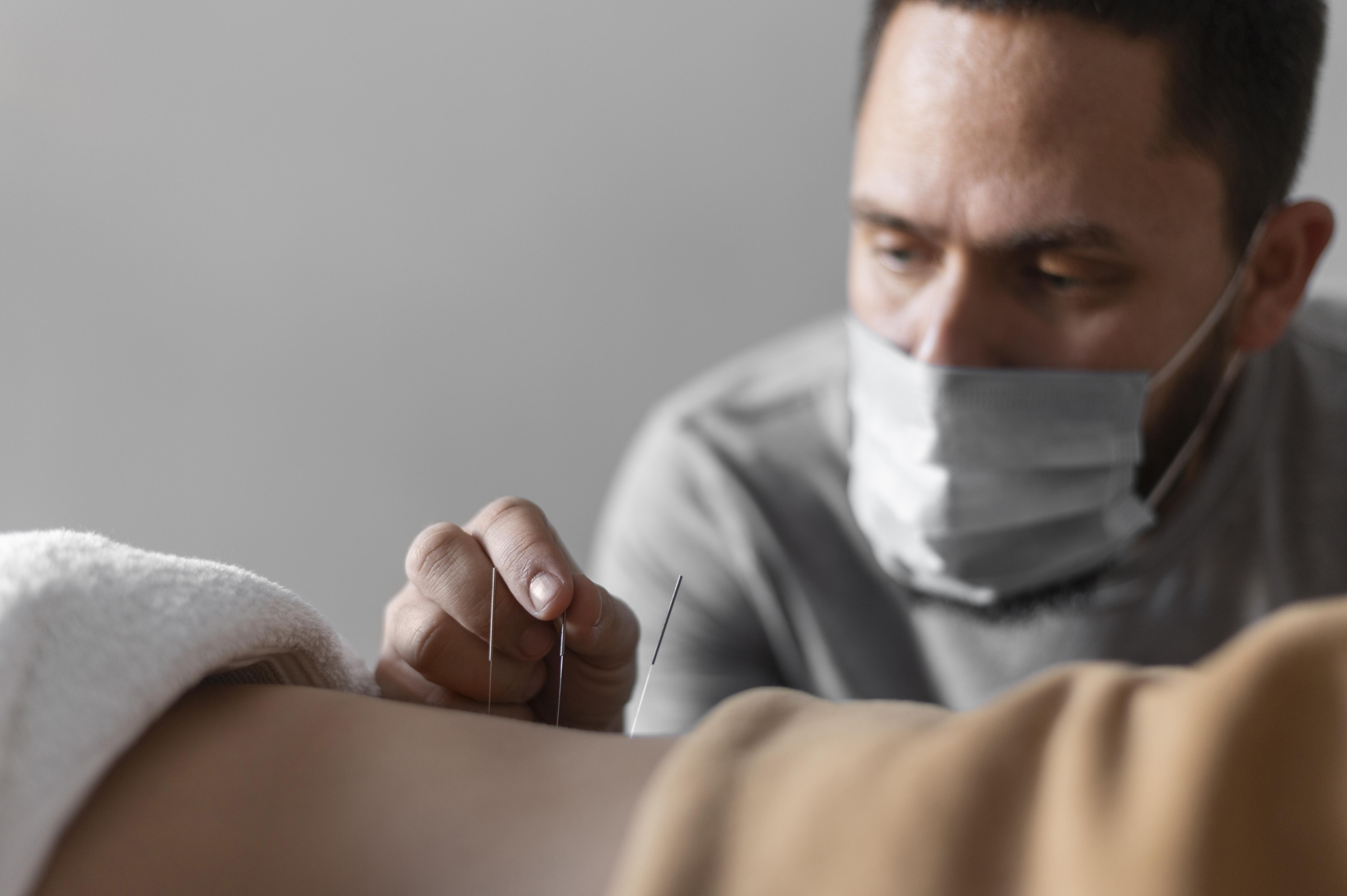Dry Needling for Muscle Pain: Your Essential Guide to Relief and Recovery
05/06/2025
Muscle pain and physical discomfort are common issues for many Malaysians due to poor posture, sports injuries, and everyday stress.
As more people explore alternative therapies to complement conventional treatment, dry needling has gained attention for its targeted approach to muscle relief.
This guide introduces the fundamentals of dry needling and its relevance for those seeking effective, evidence-based pain management in Malaysia.
Key Takeaways
- Dry needling uses thin needles to release muscle trigger points and restore normal function.
- It helps reduce pain, improve mobility, and support faster muscle recovery.
- Dry needling is rooted in Western anatomy, while acupuncture follows Traditional Chinese Medicine principles.
- When performed by trained professionals, dry needling is a safe and low-risk treatment.
- Wear loose clothing, stay hydrated, and avoid intense activity right before or after treatment.
How Does Dry Needling Work?

Dry needling is a physical therapy technique that involves inserting thin, sterile needles directly into specific muscle knots known as myofascial trigger points. These points are tight bands of muscle that can cause pain, stiffness, or restricted movement.
The goal is to stimulate a twitch response in the muscle, which helps release tension and restore normal function.
Practitioners use anatomical knowledge to target areas contributing to muscular dysfunction, making the technique precise and focused.
Why Choose Dry Needling for Muscle Pain Relief and Recovery
Dry needling offers a targeted approach without medication to relieve muscle tension and improve physical function.
A systematic review and meta-analysis by Chys et. al. (2023) found that dry needling significantly improves pain intensity compared to sham or other interventions in patients with musculoskeletal conditions. A 2022 study demonstrated significant pain reduction immediately for patients with lower back pain after dry needling treatment.
This form of trigger point therapy helps restore natural movement and reduce pain intensity by targeting specific areas of muscle tension. Many patients experience a noticeable flexibility and muscle performance improvement shortly after treatment.
|
Benefit |
Description |
|
Pain Reduction |
Relieves localised muscle pain by releasing tight treat points. |
|
Improved Flexibility |
Helps address joint issues by restoring normal muscle length and improving joint movement |
|
Faster Recovery |
Speeds up healing from muscle strains and injuries. |
|
Enhanced Muscle Performance |
Improves muscle activation and reduces fatigue. |
|
Reduced Tension & Stiffness |
Eases chronic tightness, especially in the neck, shoulders, and lower back. |
|
Supports Rehab |
Complements physiotherapy and other treatments for better outcomes. |
Improved blood flow and reduced muscle tightness help promote faster healing and longer-lasting relief, especially when paired with other rehabilitation methods.
Learn how acupressure points for cancer patients can help ease pain, fatigue, and improve overall comfort.
Dry Needling vs Acupuncture: What to Know Before Booking Your Treatment
While dry needling technique and acupuncture may look similar at first glance, they differ widely in their origins, goals, and how they’re applied in treatment.
|
Aspect |
Dry Needle Therapy |
Traditional Acupuncture |
|
Origin |
Based on modern Western medicine and musculoskeletal science. |
Rooted in Traditional Chinese Medicine (TCM) with thousands of years of history. |
|
Purpose |
Targets myofascial trigger points to relieve muscle pain and dysfunction. |
Balances the flow of energy (qi) in the body to support overall health. |
|
Approach |
Anatomical and science-based; focuses on physical structure and movement. |
Holistic; focuses on energy pathways (meridians) and internal organ systems. |
|
Application |
Often used by physiotherapists or medical practitioners. |
Administered by licensed acupuncturists or TCM practitioners. |
|
Treatment Goals |
Pain relief, improved mobility, and muscle recovery. |
General wellness, energy balance, and treatment of various health conditions. |
Despite looking alike, the two techniques are guided by very different principles. Knowing what separates them can help you make a more informed treatment decision.
Curious about how acupuncture can improve your well-being? Discover the top 10 benefits of acupuncture and see how it supports your overall health.
Is Dry Needling Safe? Understanding the Risks and Precautions

The Ministry of Health in Malaysia reported that dry needling is generally considered a safe treatment when performed by trained professionals. Most patients experience only mild, short-term effects that signal the body’s natural healing response.
|
Potential Risk |
Description |
|
Soreness |
Mild muscle soreness at the needling site is common and usually resolves within 24–48 hours. |
|
Bruising or Bleeding |
Small bruises or minor bleeding may occur, especially in more sensitive areas. |
|
Dizziness or Fatigue |
Some people may feel lightheaded or tired immediately after treatment. |
|
Rare Complications |
In very rare cases, risks include infection (if needles are not sterile) or pneumothorax if needling is done near the chest by untrained practitioners. |
Safety Precautions
- Choose a certified practitioner with proper training in dry needling. In Malaysia, many physiotherapists and TCM professionals offer this service.
- Before the session, inform your practitioner about any medical conditions, blood disorders, or medications (e.g., blood thinners).
- Follow post-treatment advice such as rest, hydration, and avoiding strenuous activities for the day.
- Observe your body’s response and promptly report any unusual symptoms to your therapist.
When done by qualified professionals, dry needling is safe and effective for managing muscle pain. Knowing the precautions ensures a smoother and more comfortable recovery.
What to Know Before Your Dry Needling Session: Do’s and Don’ts

Preparing properly for dry needling can make your session more comfortable and effective. Here are a few important do’s and don’ts to keep in mind:
Do’s
|
Don’ts
|
Taking the time to prepare properly helps maximise treatment benefits and minimise common dry needling side effects.
Get Expert Dry Needling Treatment with Sunway TCM’s Trusted Practitioners

Many certified clinics offer dry needling in Malaysia, providing a focused approach to muscular recovery and pain management.
Sunway TCM offers professional care backed by experienced practitioners and integrative treatment plans for those seeking reliable TCM in Malaysia.
- Targeted Muscle Relief: Utilises thin, sterile needles to address myofascial trigger points, helping to alleviate muscle tension and improve mobility.
- Comprehensive Pain Management: Effective for acute and chronic pain conditions, including those related to cancer symptom management.
- Experienced Practitioners: The centre boasts a team of qualified TCM practitioners specialising in various fields, such as orthopedics, rehabilitation, and pain management.
- Personalised Treatment Plans: Each session is tailored to the individual's specific needs, ensuring optimal outcomes.
Conclusion
Dry needling is a clinically backed technique that offers targeted relief for muscle pain, tightness, and movement restrictions.
It's suitable for those managing chronic discomfort or seeking faster recovery from physical strain.
When performed by trained professionals, dry needling is safe and effective, especially with holistic support.
Contact Sunway TCM today to schedule a consultation and explore how dry needling and its full range of traditional and complementary therapies can support your recovery.
Back
